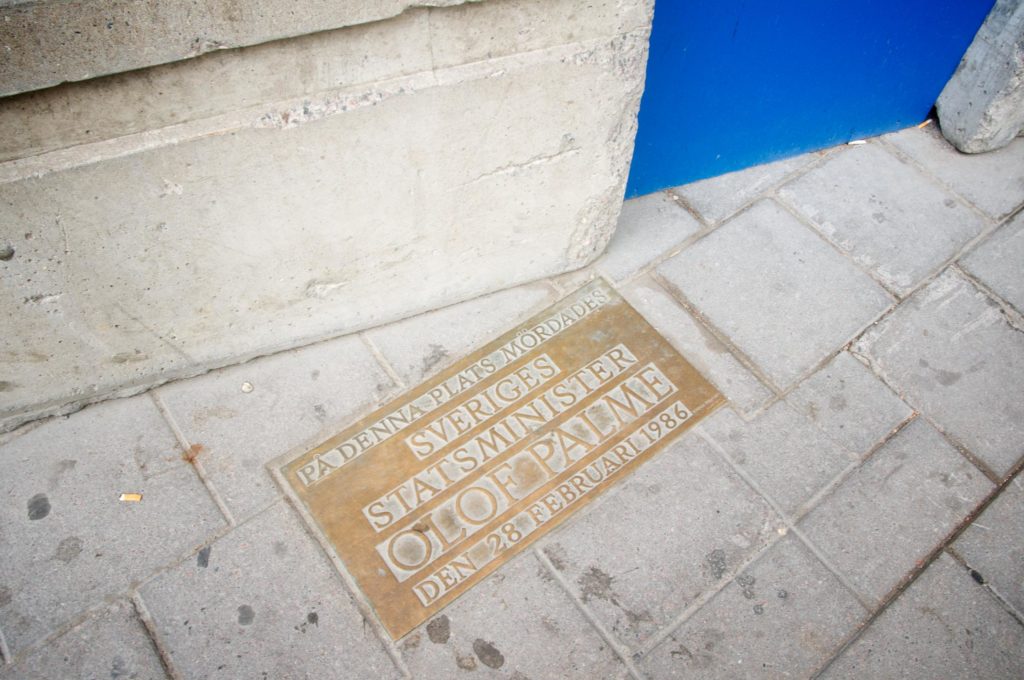On Feb. 28, 1986, then-Prime Minister of Sweden, Olof Palme and his wife Lizbet attended the cinema late one night after deciding to give his bodyguards the night off. Upon exiting the cinema an armed man shot two rounds behind him hitting Palme in the back. The second bullet grazed Lizet and the shooter fled 89 steps next to the central street of Stockholm. Palme was rushed to Stockholm Sabbatsberg hospital where he passed at midnight on March 1.
A constant voice of peace for the Swedish people was lost that night and to this day, no one has solved the mystery of who murdered Palme and why.
Olof Palme was born in Sweden on Jan. 30, 1927 and started his political career in 1953 as the personal secretary of then-Prime Minister Tage Erlander. In 1967 he became the next Prime Minister after Erlander resigned.
Palme was known as a consistent voice of peace, democracy and economic equality for the Scandinavian country of Sweden.
Jennette Horwitz, an English language and literature professor at Wright State University, lived in Sweden at the time of his murder.
“I was 15 years old,” Horwitz said. “I had been in northern Sweden skiing for a week as we had our week of school winter/sports break. We were riding the bus back when we found out on the radio what had happened.
“Being only 15, it was still shocking,” Horwitz continued. “Sweden was not known for violence then, it was a very peaceful country where things like that did not happen. That said, it was very, very shocking to us kids that something like that happened.”

Related Articles
- Divisive Holidays that Share the Same Day and their History
- Social Credit System Rewards or Punishes Citizens based on behavior
Conspiracy theories abound surrounding the murder, drawing many similarities to the JFK assassination. In 2010, Sweden removed the statute of limitations on murders, specifically so that investigators could continue their search for Palme’s killer for as long as it takes.
Over the years, 130 people have confessed to the murder, about 12,000 have been accused and 450 possible murder weapons have been tested, according to Quartz.com.
Lizbet identified and blamed Christer Petterson, a known petty criminal, for the murder of her husband after recognizing signs of alcoholism in him due to her work as a psychologist. There was no evidence that Patterson killed Palme and he was released a year after his arrest.
The initial investigation of the assassination was handed over to journalist Stieg Larsson, writer of “The Millenium Trilogy,” a series of Swedish novels that would be better known by their titular character “The Girl With the Dragon Tattoo.”
Larsson was obsessed with the murder until his death in 2004, owning over 20 cardboard boxes filled with notes and newspaper clippings related to his investigations. Fellow journalist Jan Stocklassa continues to work the case and finish the novels.
One theory surrounds Semdin Sakik, a former commander of the Partiya Karkerên Kurdistanê, also known as the Kurdistan Workers Party of Turkey (PKK).
Sakik claimed that the leader of the PKK sent orders to kill Palme after eight members of the group were expelled from Sweden. A Swedish Police chief by the name of Hans Holmer had arrested several Kurds following the murder but was forced to free them due to lack of evidence.
Another theory comes from a commander of an apartheid-era police hit squad, Eugene de Kock, who states Palme’s assassination was a step in Operation Long Reach, a secret apartheid-era program intended to harass, silence and gather information about opponents of South Africa’s white-led government abroad.
The murder would’ve been carried out by Craig Williamson, a notorious spy for the government that carried out multiple acts against enemies of South Africa at the time.
Kock’s confession of this came during his trial, and he provided no details to substantiate the claims.
German interrogation records stated that the murder was carried out by a contract killer hired by the Yugoslavian security service named Vinko Sindicic, who claims former Yugoslav dictator Ivo D. Tito ordered his secret police to assassinate dissidents across the world. However, Tito died in 1980, six years before Palme’s murder.
Thomas Pettersson, a freelance journalist based in Goteborg, offered a new possible culprit in 2017, suggesting a witness of the crime, Stig Engstrom, murdered Palme.
Petterson states that Engstrom “had access to the same kind of weapon used to kill Mr. Palme, that he had been active in a shooting club, that he had political and private motives for killing Mr. Palme, and that his personality matched a police profile of the likely killer,” according to the New York Times.
Due to the focus on investigating Kurdish agents and South African forces, investigators may have overlooked him. Yet, Engstrom passed away in 2000 from a rumored suicide and the theory has been debunked by his ex-wife.
Palme’s murder threw Sweden into a state of disbelief and panic, as the investigation to find his killer is ongoing and the list of theories continue to grow.
Valencia Bruno
Reporter

